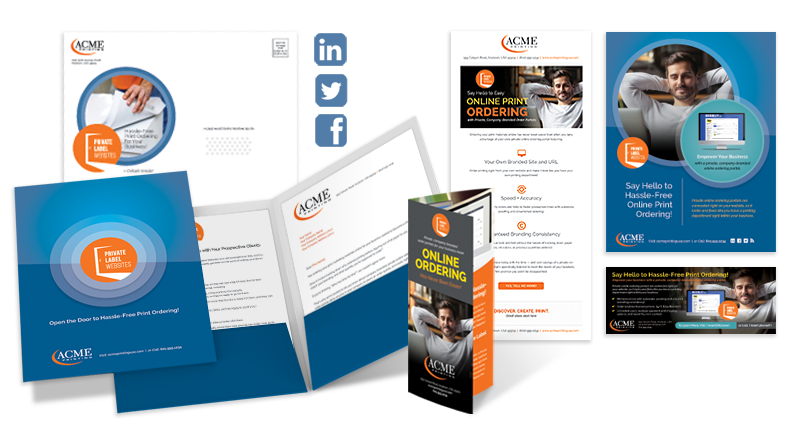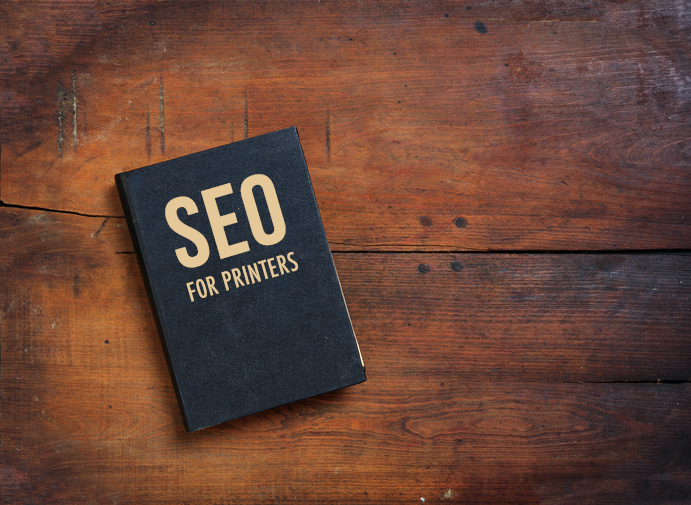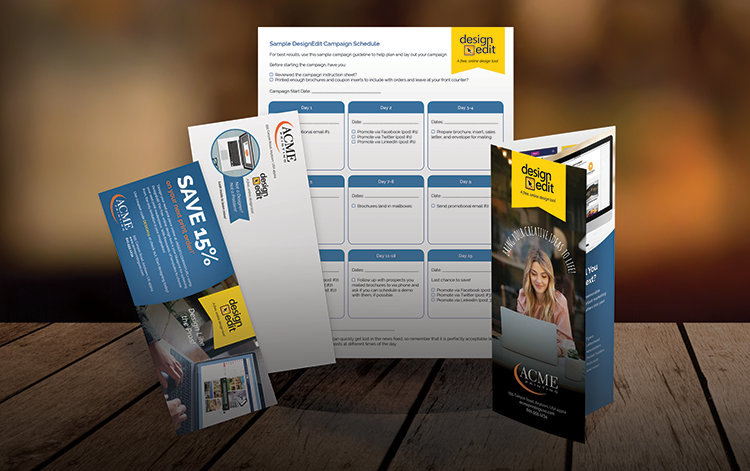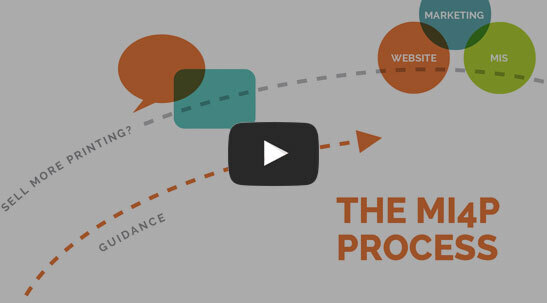Introducing the Private Label Website Marketing Kit

Private Label Websites have been hailed as, “Your Secret Weapon for Repeat Print Business.” This customer retention heavy-hitter provides your print buyers with a custom, branded, print-buying experience, creating a super-highway between your print website and your print buyers’ website. However, the benefits of Private Label Websites will remain “pie in the sky” if you’re unable to get your print buyers on board and using them. And now, you’ve got a whole new set of tools at your fingertips to make it easy with the Private Label Website Marketing Kit. Introducing the Private Label Website Marketing Kit Now you can easily reach out to your corporate customers and show them what you have to offer with a complete, online and offline marketing campaign as part of the all-new Private Label Website Marketing Kit. This kit highlights the incredible power of a private online ordering portal, and the time- and money-savings your clients can enjoy when they tap into it. The All-New Private Label Website Marketing Kit features offline components, including: Brochure Statement Stuffer (Insert size) Sell Sheet Sales Letter Presentation Folder Envelope And online components: Email Three sets of social media posts And everything you need to put it all
Is it Time to Consider Providing Subscription Services at Your Print Business?

As the coronavirus continues to affect nearly all businesses across the world in some way, you might find yourself trying to brainstorm creative solutions to ensure your print business not only survives the pandemic but thrives after “normalcy” returns. Let me add to your brainstorming by throwing out an idea for you – an idea that could have exponential benefits for your company: adding a subscription-model to your print business. Now, before you dismiss this idea and quickly retort, “Yeah, but hold up. I’m a printer, and I don’t offer subscriptions,” consider the following: A recent study shows that 76% of Americans have a least one subscription service, while over 60% have two or more. The average subscription billing vendor is growing 30-50% annually. The subscription e-commerce market has grown by more than 100% percent a year over the past five years. Subscription-type businesses, whether in-part or in-whole, help businesses (like yours) weather times of crisis such as these because of the economic “moat” they’ve surrounded themselves with. How Subscriptions Could Benefit Your Print Business Subscriptions have a unique way of providing what consumers are looking for, such as personalization, convenience, and straight-up simplicity. There’s also the fact that: Subscriptions
E-commerce For Printers: Unlocking the Mystery of Shopping Cart Abandonment

Is this you? You’ve invested in a great website. You’ve worked hard to streamline the customer buying process. You’ve even got more website visitors than ever before. But there’s just one problem. Your print buyers aren’t buying anything online, leaving you to wonder, “What’s the deal?” Abandoned shopping carts plague even the best businesses. Here are five tips to help you better understand why it happens and what you can do to fix it. 5 Tips to Reduce Abandoned Shopping Carts 1. Don’t Take It Personally You should know right from the start that you are not alone in your abandoned shopping cart woes. According to Listrak, the average rate at which an average consumer abandons their shopping cart before making a purchase is 81%. Wowzers! To say that another way, even if you are doing everything PERFECTLY, 4 out of 5 people (including your print buyers) will leave their carts and never return if for no other reason than they got interrupted or distracted. What you can do: It’s essential to accept that not every print buyer who puts an item in their cart will buy from you, so be ready to move on without taking it personally. 2.
Websites For Printers: 7 Best Practices for Website Design

Good website design for your print company could mean the difference between getting an online order and being passed over for a competitor. But why? Isn’t a good website design like art? Isn’t it relative and dependent on the eye of the beholder? Not exactly. Your website design has to accomplish three critical things: Your website design should create a great, easy-to-use user experience. Your website design should translate competency. In other words, a good website design = a competent print business. Your website design should help to create trust in your print buyer. Here are seven best practices you can follow in your website design to help you get there: 1. Color Harmony While it’s true that you can print any color in the rainbow, it’s not necessarily a good idea to use them all on your website. Sensory overload can backfire and send people running to a more professional-looking printer. Let photo graphics provide the ‘full-color’ on your website, and keep your color palette simple and inspiring. “Good design is good business.” – Thomas Watson, Jr. 2. Let Them Scroll There’s no need to pack everything into the top portion of your website anymore. Times have changed. Remember,
SEO For Printers: SEO By the Book

It seems a day rarely goes by without our team here at Marketing Ideas For Printers fielding Search Engine Optimization (SEO) questions from our customers and prospects. I recently found myself answering one of those questions with one of our newest customers and found myself remembering the advice of Sal, the SEO Expert. Sal offered good advice almost two years ago, and it’s still relevant today. So, I thought it time to reintroduce you to Sal’s tips and expand on Sal’s recommendation to approach your website’s SEO strategy the same way you approach a book. It All Starts with the Title When you enter a bookstore, whether the physical or virtual version, what do you notice first? Of course, it’s the book covers, and the same is true with search engines. That’s because the title is what appears in your website’s home page tab or window bar, and it’s the equivalent of a book’s title. Books are known by their titles, so it’s essential to ask yourself: How do you want your website to be known? How do you want to be known to the search engines? Then, make sure the answer to those questions reflects in your website’s title.
Websites For Printers: 5 Tips to Market Your Print Website

You’ve updated your website, and now you’re ready to sit back and watch the sales roll in! But there’s a problem. Your website is impressive, but the masses aren’t flocking to it as you had hoped. And, when they do go there, it seems like they’re only looking around and not ordering. What’s the deal? If you’re struggling to get the kind of traffic to your website that you were hoping for, below are five tips to help you market it successfully and get the results you want. 1. Change your mindset The best thing you can do to get people to your website is to retrain your brain on how to get them there. Putting up a fancy-pants website doesn’t mean your print buyers will instantly flock to it. That’s sort of like putting a basket of clean laundry in front of some teenagers and assuming they’ll fold clothes. (Sigh.) So, if you’ve spent the last decade or more training prospects and customers to call you to order their printing or to email you directly, it’s going to take some effort to retrain them to go to your website. With “gazelle intensity,” as Dave Ramsey says, retrain your brain
Marketing for Printers Doesn’t Have to Be Hard

“Ugh. Marketing. Why does it have to be so hard? Why can’t people just know my product or service is awesome and come bursting through my doors to buy it?” If you’ve ever felt like this when trying to get the word out about a new product, you’re not alone. Except for a select group of people (like those who do marketing for a living), marketing can feel a lot like exercising or flossing your teeth. You know you’ll ultimately be better for it, but it takes time and work and can feel like one more thing you “have to do.” Wouldn’t it be great if you could outsource exercising – as in, hire someone to do it for you and get all of the benefits? (Uh… yes, please!) Or, what about flossing? (Eww. Nevermind.) You get the idea, though. Marketing doesn’t have to be hard, and you don’t have to go it alone. There’s no rule that says you have to write, design, and create all of your own genius marketing campaigns. You can call in reinforcements for help! Added Marketing Help Coming Your Way! From monthly direct mail packages to social media marketing delivered right to your inbox
Now Are You Defending Your Digital Castle?

A few weeks ago, we brought in Kris Rivenburgh, an attorney, website accessibility consultant, and the author of The ADA Book to help printers understand the challenges they may face with website accessibility and compliance issues based on the Americans with Disabilities Act (ADA). After I met Kris, it quickly became my opinion that this would be one of the most important webinars we’ve ever presented. After the webinar, I learned that I wasn’t alone in this opinion when I received this feedback from Danny (one of the attendees): Thank you, Dave, for providing this information. When I first read the email [about the Defend Your Digital Castle webinar you were promoting], I was pretty dubious. After we spoke on the phone, I thought it might be worthwhile. Now I understand how valuable this could possibly be. Danny’s first impression of the webinar (based on the email he received) was that we were trying to use a scare tactic to encourage people to attend this webinar. I assured him this wasn’t the case, and that this was an incredible learning opportunity. Danny attended the webinar, and after the fact, Danny agreed! But, I’m getting ahead of myself. Let’s go back
How White Papers Help You Sell More Printing

All printers want to sell more printing, but many tend to overlook the impact that white papers have on reaching that goal. What are White Papers? A white paper is an “authoritative report or guide meant to help readers understand an issue, solve a problem, or make a decision”. They provide an in-depth study on a specific topic. What’s great about providing your print buyers with white paper content is YOU are the authority in that definition, and you’re using that authority to help your audience solve their sales or marketing problems using print. The Benefits of White Papers for Printing and Marketing Companies Along with addressing or solving a problem for the reader (which is a benefit in and of itself), white papers offer many other benefits as well. White papers help generate leads. White papers help you be seen as an industry thought leader. White papers are typically geared towards a B2B focus, building powerful corporate relationships that help shore up your bottom line. White papers give you an edge over the competition when used as a valuable resource to your print buyers. White papers help influence the buying decisions of your print buyers. A 2015 Eccolo Media
Why Printers Should Stop Editing PDFs in Adobe Illustrator

You’ve probably heard the expression, “Just because you can do something doesn’t mean you should.” For example: You can put a water hose in your car’s gas tank, but you probably shouldn’t. You can use the same password for all of your internet accounts, but you probably shouldn’t. You can use Adobe Illustrator to edit PDF files, but you probably shouldn’t. “Yep, uh-huh, wait… what? Why shouldn’t I use Adobe Illustrator to edit our PDF files?” Why Adobe Illustrator isn’t an Ideal PDF Editor Not too long ago, an update was applied to the engine that powers uDesignIt!, an MI4P website add-on that allows print buyers to personalize documents on printers’ websites. The update came with all the “normal” update stuff you’d expect, such as better performance, enhancements, etc. It also took care of some housekeeping items on the way PDFs are produced. The only downside of the update is that it caused the PDFs that are created as a result of using uDesignIt! to be less friendly when edited in Adobe Illustrator. The Real Question (And Answer) If you’re asking: “Less friendly? Does this mean I can’t use Adobe Illustrator to edit PDFs created by uDesignIT! any longer?”, the



